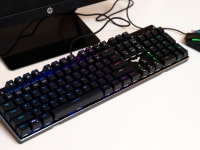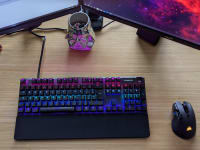 Credit:
Reviewed / Christopher Coke
Credit:
Reviewed / Christopher Coke
Products are chosen independently by our editors. Purchases made through our links may earn us a commission.
If you’re considering buying your first mechanical keyboard, choosing the right switch is one of the most important decisions you can make. But with so many terms like red, blue, brown, linear, tactile, Gateron, and Cherry thrown around, it can get confusing trying to pick the best one. Knowing the difference and which one is right for you can make all the difference in your typing experience.
Unlike other products, deciding which is best for you isn’t as simple as reading user reviews. Depending on how they use their keyboard and their personal preferences, a recommendation that works for one user could be completely out of place for another. Here are the most important things you need to know about mechanical keyboard switches so you can make the right choice the first time.
What are mechanical key switches? (And why you should want them!)
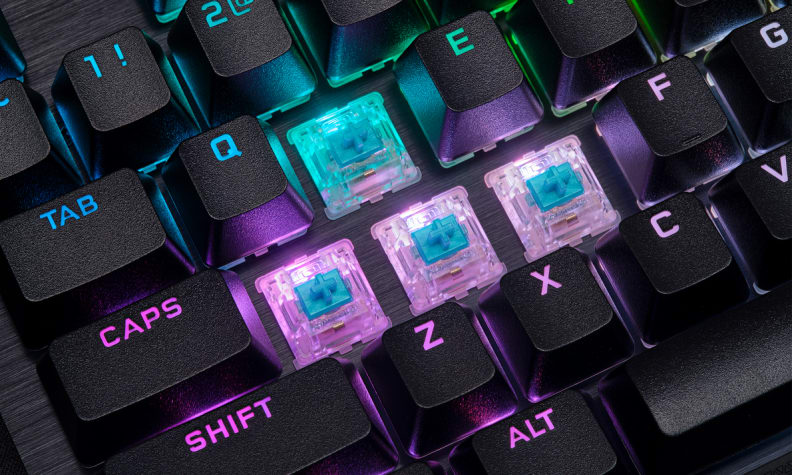
Cherry Blue switches, like the ones shown here, audibly and physically click when you type.
Keyboards come in two main varieties: membrane and mechanical. Membrane keyboards are the most affordable and easiest to come by, often playing the role of “pack-in peripheral” with pre-built computer systems. Underneath the keys is a rubber sheet (the “membrane”) that contacts the circuit board with each keypress, sending the input through to the PC. Membrane keyboards can be fine, and many people swear by them, but they have a tendency to feel mushy and unsatisfying to use.
Mechanical keyboards use individual switches under each key. These switches are self-enclosed units, each with its own electrical contacts. They typically feel much smoother and crisper to use than competing membrane keyboards, and offer vastly improved lifespans, typically of 50 - 100 million key presses (compared to the average of five million presses with rubber dome membrane keyboards), offsetting their higher cost with longer life.
They also come in different varieties, allowing you to cater the sound and feel of your keyboard to your own tastes. Because of this, many users find mechanical switches to be more satisfying and pleasant to use. If you work long hours at a PC, it is absolutely worth considering investing in a mechanical keyboard.
The main types of switches
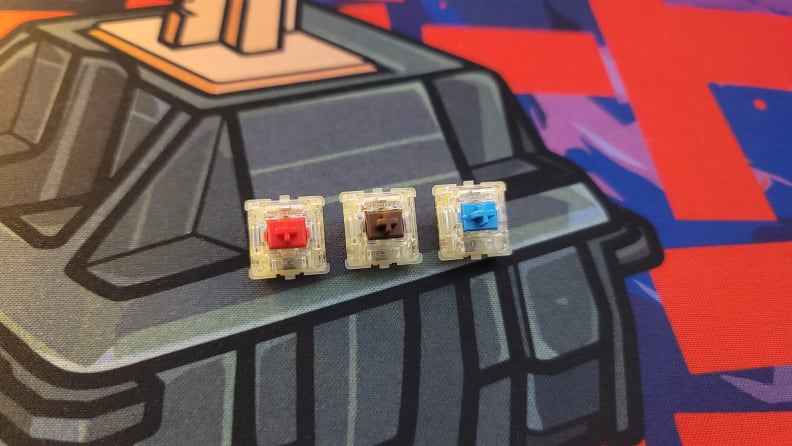
The three most popular switches: Cherry MX Red, Brown, and Blue.
Mechanical switches come in three main varieties: linear, tactile, and clicky. These three types are each best suited for different tasks but aren’t exclusive to any. There are no hard rules when it comes to keyboard switches, but there are qualities of each that are worth keeping in mind.
Linear
Linear switches are smooth from top to bottom. There is no feedback to let you know when an action has been sent, which lends them a consistency that many users enjoy. They are particularly popular among gamers due to their increased ease of quickly sending multiple inputs. They’re less ideal for typing (at least, initially) as they are significantly easier to press by mistake, resulting in more typos. Over time, this becomes less of an issue but creates more of a learning curve while getting used to them. Linear switches tend to be the quietest of all the standard switch types.
Clicky
Clicky switches are the loudest of the three main types of switches. Unlike linears, clicky switches have a tactile bump when the key actuates and a light clicking noise, similar to a typewriter. These switches are often regarded as the best for typing due to their increased feedback but can be disruptive in work environments where the added noise wouldn’t be welcome.
Tactile
Tactile switches are a middle-ground between the former two types. These switches do not have an audible click but do have a silent bump that can be felt when the key actuates. Tactile switches are some of the most popular and are viewed by fans as offering the best of both worlds.
These three main switch types are typically coded in the same three colors, popularized by Cherry, one of the leading switch manufacturers in operation today. Red switches are most often linear, blue switches are most often clicky, and brown switches are most often tactile. There is some variation between brands (Razer has its own way of color-coding its keyboard switches), so always take the time to read the full product listing to be sure the keyboard you’re interested in has the switch you’re looking for.
What are the important specs?
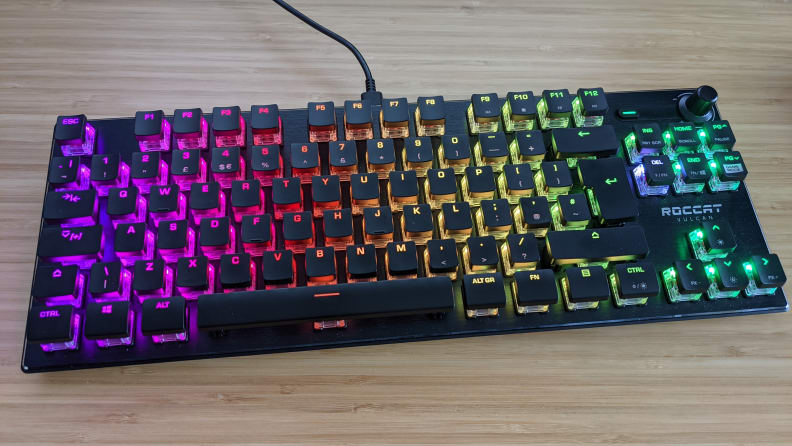
The Roccat Vulcan TKL loses the number pad, but has everything else you could want in a gaming keyboard.
There are three main specs to look at when considering a switch for your mechanical keyboard: actuation force, actuation distance, and travel distance. When comparing these, it’s useful to use Cherry’s standards as a baseline since they’re the most popular and well understood.
Actuation force
Actuation force refers to how hard the key is to press. Switches most often fall between an actuation force of 45-60 grams. The lighter the weight, the easier it is to send a keystroke—for better and worse. Gamers might prefer a very lightweight switch for rapidly sending many inputs. Typists, on the other hand, would probably be better suited with a heavier switch to ward off typos. There are switches that are much heavier than 60 grams, but choosing too heavy of a switch could cause finger fatigue.
Travel distance
Actuation distance and travel distance refer to how far the key travels. Actuation distance is how far a key needs to travel before sending an input. Travel distance is the total distance it can move before hitting the bottom of its path (known as “bottoming out”). These distances are fairly standard at 2mm and 4mm respectively with minor differences between brands. Key switches with shorter distances are often regarded as speed switches and can feel especially sensitive to the touch.
Lifespan
Another useful spec is lifespan, though less so than it might first seem. The vast majority of key switches available in keyboards today are rated between 50 and 100 million key presses. Some lower cost switches are only rated for 20 million presses, though they’re less common. Even at 20 million presses each, it is far more likely that you will upgrade your keyboard before a switch fails, as long as you take good care of your keyboard.
Cherry MX and beyond: Gateron, Kailh, and gaming brands
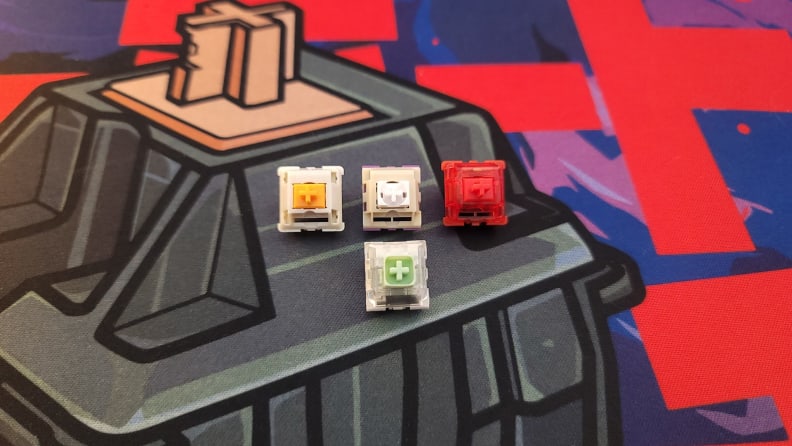
A small selection of less common switches from Glorious, Wuque Studio, Gateron, and Kailh.
The biggest manufacturer of mechanical key switches today is Cherry. Its full-size key switch line is known as Cherry MX. Until 2014, Cherry held a patent on its switch design and earned a tremendous pedigree due to the quality and reliability of its switches. For years, the most popular mechanical keyboards used Cherry MX switches, and that largely holds true today.
However, with the expiration of its patent, other brands have slowly begun to rise in popularity. Gateron and Kailh are Cherry’s two biggest competitors and their switches can be found in many excellent keyboards. Though they’re not identical, red, blue, and brown switches from all three manufacturers are incredibly similar. Gateron and Kailh switches tend to be lower cost.
Perhaps because of their underdog position, both Gateron and Kailh seem more willing to take more risks and develop new switch designs. These often have different color schemes and naming conventions, like the Kailh BOX Jade switches found in one Ducky One 2 Mini variant. Because of this, and the minor variations that do exist between switch manufacturers, it’s always important to examine the type of switch used and Google if necessary.
It’s also become popular for major gaming brands to release their own switches. HyperX, Logitech, Razer, and Corsair each have their own switches. These are typically modeled after the three main types described above, but take care to look closely at the important specs described in the prior section.
Optical vs. mechanical switches
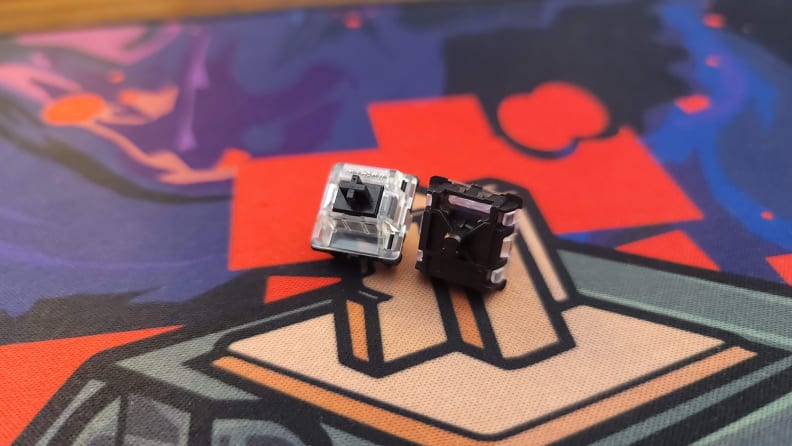
Optical switches lack electrical contacts on the bottom housing.
When researching mechanical keyboards, it’s likely that you’ll encounter optical key switches. These switches follow many of the same rules as traditional mechanical key switches, but the way in which they operate is different. Rather than use mechanical contacts, optical switches use a light emitter on the circuit board. When the key is pressed, the beam of light is able to reach a receiver and trigger a keypress.
Optical switches are technically faster than mechanical key switches. Because there is no electrical contact, commands can be sent instantaneously, without the need for debounce delay. This delay is inherent to mechanical switches to filter out electronic interference resulting from physical contact. Because there are no electrical components within the switch, they also tend to be more durable.
With that in mind, do take any bold claims of faster response time with a grain of salt. Gaming keyboards using optical switches often market themselves on their added responsiveness. While technically true, these are differences of milliseconds and would be incredibly difficult to actually perceive in normal use.
Drawbacks of mechanical switches
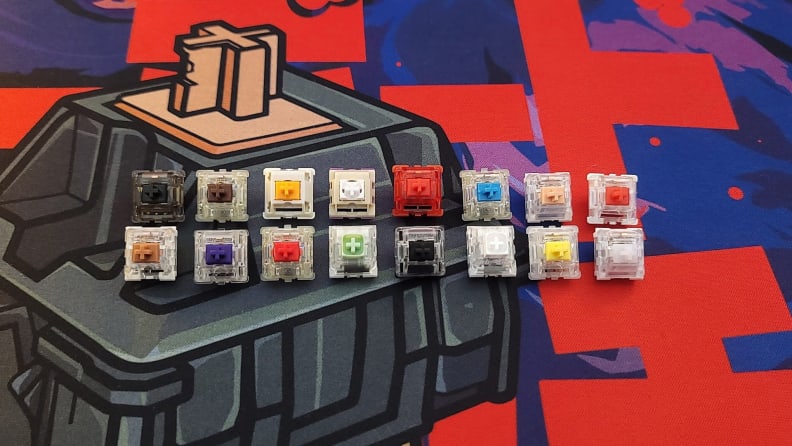
With new switches being released all the time, there's always a new switch to try.
Mechanical switches are great, but they’re not without their drawbacks. The biggest issue plaguing mechanical keyboards is their increased volume. Compared to a typical membrane keyboard, mechanicals are louder and can be more distracting to anyone in the same room with you. Cherry, Gateron, Kailh, and other switch manufacturers have sought to address this by introducing “silent” switches with built-in sound dampening components, but even these can exceed the volume of a membrane keyboard.
The other factor is cost. Though prices have come down dramatically in recent years, mechanical keyboards are usually more expensive than membrane keyboards. This is especially true if you plan to buy from a major brand like Logitech or Corsair. While it’s entirely possible to buy a mechanical keyboard for less than $50 (like Keychron’s impressively affordable C1, flagship keyboards can easily cost upwards of $150 or even $200.
Treat yourself to a mechanical keyboard
If you’re new to the world of mechanical keyboards, it can be easy to become overwhelmed and give up entirely. Start small: linear, tactile, or clicky. From there, see what’s available within your budget that has the features you want.
With the expiration of Cherry’s MX patent, choosing another brand isn’t as much of a risk as it used to be. Consider purchasing from a site like Amazon which offers a generous return policy, so if you decide you don’t like it, you can easily send it back and try something new. Finding the right fit for you can involve some trial and error, but once you find the perfect fit, it can be hard to go back.

